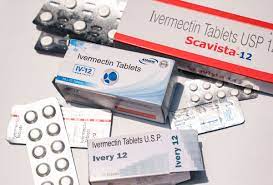
Breaking News
 This Housing Collapse Is WAY Worse Than 2008 -- And They're Hiding It
This Housing Collapse Is WAY Worse Than 2008 -- And They're Hiding It
 BREAKING: Assault Weapons Ban Just Passed For 2026 : 10 Years Prison Who Own This!
BREAKING: Assault Weapons Ban Just Passed For 2026 : 10 Years Prison Who Own This!
 GAME OVER: JP Morgan Flips LONG + China Ban Starts In 4 Days
GAME OVER: JP Morgan Flips LONG + China Ban Starts In 4 Days
 SILVER CRASHES TO $75 - But China Is Paying $89 (Ghost Week Trap)
SILVER CRASHES TO $75 - But China Is Paying $89 (Ghost Week Trap)
Top Tech News
 EngineAI T800: Born to Disrupt! #EngineAI #robotics #newtechnology #newproduct
EngineAI T800: Born to Disrupt! #EngineAI #robotics #newtechnology #newproduct
 This Silicon Anode Breakthrough Could Mark A Turning Point For EV Batteries [Update]
This Silicon Anode Breakthrough Could Mark A Turning Point For EV Batteries [Update]
 Travel gadget promises to dry and iron your clothes – totally hands-free
Travel gadget promises to dry and iron your clothes – totally hands-free
 Perfect Aircrete, Kitchen Ingredients.
Perfect Aircrete, Kitchen Ingredients.
 Futuristic pixel-raising display lets you feel what's onscreen
Futuristic pixel-raising display lets you feel what's onscreen
 Cutting-Edge Facility Generates Pure Water and Hydrogen Fuel from Seawater for Mere Pennies
Cutting-Edge Facility Generates Pure Water and Hydrogen Fuel from Seawater for Mere Pennies
 This tiny dev board is packed with features for ambitious makers
This tiny dev board is packed with features for ambitious makers
 Scientists Discover Gel to Regrow Tooth Enamel
Scientists Discover Gel to Regrow Tooth Enamel
 Vitamin C and Dandelion Root Killing Cancer Cells -- as Former CDC Director Calls for COVID-19...
Vitamin C and Dandelion Root Killing Cancer Cells -- as Former CDC Director Calls for COVID-19...
 Galactic Brain: US firm plans space-based data centers, power grid to challenge China
Galactic Brain: US firm plans space-based data centers, power grid to challenge China
Bizarrely low dose Ivermectin still cut infections, hospitalization in half, deaths by 70%

How super low dose ivermectin still reduced infections by half
A whole town in Brazil of 220,000 people was invited to take part in an ivermectin study. In Itajaí 159,000 people said "Yes" to taking part in a study of a bizarrely low dose infrequent form of ivermectin to see if it prevented people catching Covid. They were asked to take the 0.2mg/kg/day dose two days in a row but only once every two weeks. Since the half-life of ivermectin in humans is only 12–36 hours, those taking it in the study were effectively left unprotected at least half the time. Our livers convert ivermectin into chemical bits and pieces that have half-lives of three days, so those downstream metabolites, if they matter, might kick around a bit longer. More bizarrely, participants were asked not to take ivermectin if they got ill. This study appears to be purely about prevention. Despite all this, it still worked.
Compared to all the other towns in the Santa Catarina State of Brazil, Itajaí has the lowest mortality rate, far below even the second lowest.
The iMask prevention plan by the Frontline Covid-19 Critical Care Alliance suggests using the 0.2mg/dose twice a week long term. Those ICU doctors recommend you double the dose if you think you've been exposed for real.
44% lower infection rate
So 113,000 people took ivermectin this way, 45,000 didn't. The infection rate in the ivermectin users was 3.7% which was quite a lot lower than the non-users, of which 6.6% got infected. Imagine if they'd taken ivermectin two times a week instead? The rates of infection in the ivermectin group might have been much lower.
70% lower death rate
The regular use of ivermectin (albeit, very low and infrequent) still saved a lot of lives. The death rate in the ivermectin group was 0.8% compared to 2.6% of the non-users. They controlled for age, sex and co-morbidities.



